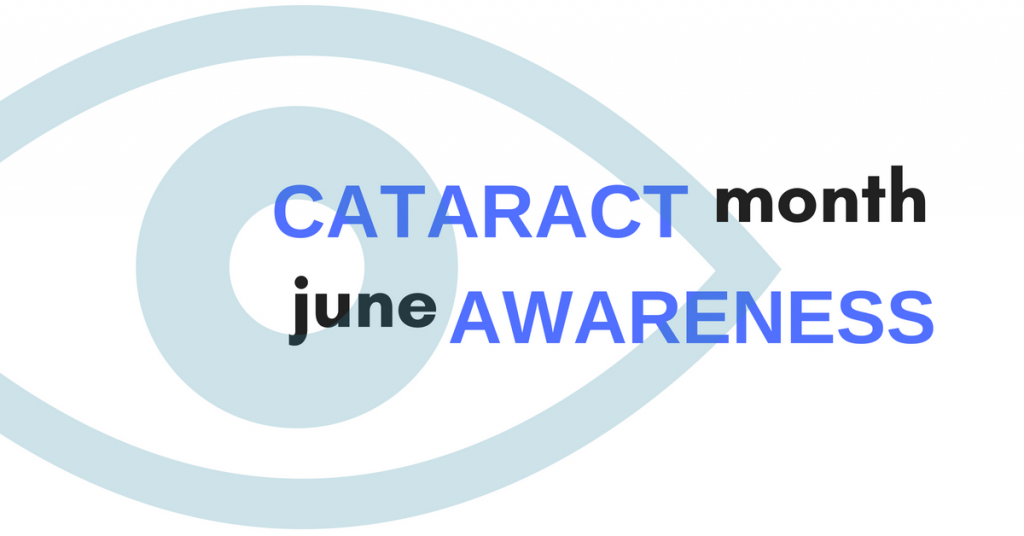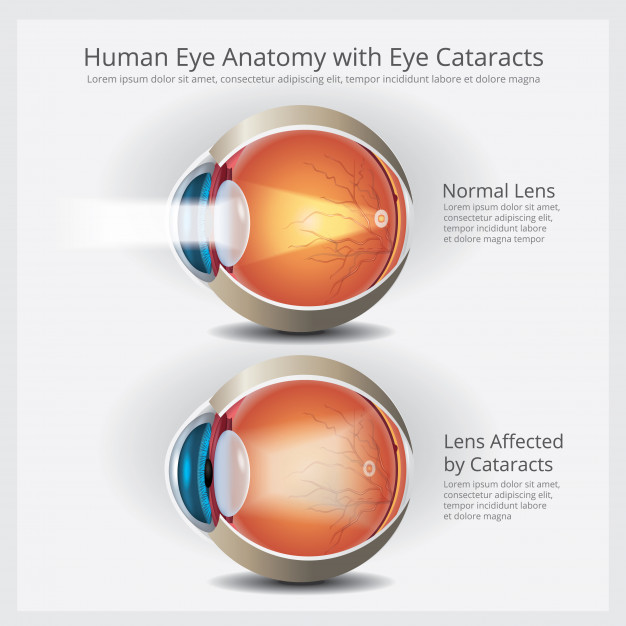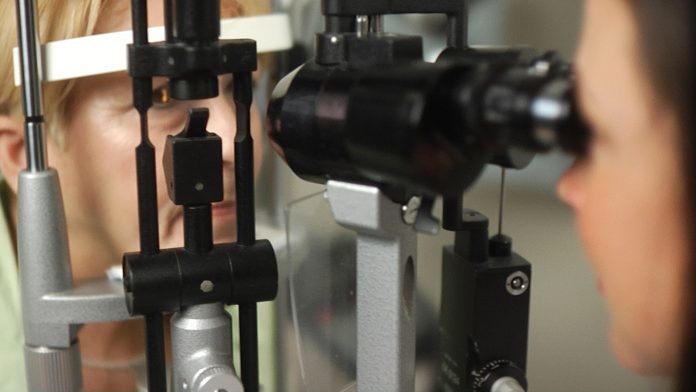By Dr. Sarah Eccles-Brown, Elmquist Eye Group
One in six Americans older than age 40 will develop cataracts. By the time we turn 70, over one-half of Americans will have them.

Cataracts are the leading cause of vision loss for people older than 55, but they don’t have to be. Unlike many eye diseases, vision loss due to cataracts can be restored. Cataract surgery is one of the most commonly performed procedures in the United States with a 95 percent success rate. However, the existence of cataracts does not necessarily mean that surgery is needed immediately, so it is important to understand your options before proceeding. A second opinion can help determine if and when surgery is right for you.
The eye is like a camera, and it uses a lens to focus. As we age, some of the protein and water that let light pass through may clump together and start to cloud the lens. You might notice your vision becoming blurry, increased sensitivity to light with glare, needing brighter light to read, poor night vision, or a fading or yellowing of colors.
Types of cataract include:
- Age-related—95 percent of cataracts are age-related, usually after age 40
- Congenital—These are present at birth, usually caused by infection or inflammation during pregnancy; possibly inherited
- Traumatic—Lens damage from a hard blow, cut, puncture, intense heat or chemical burn may cause cataracts
- Secondary—Some medicines including steroids, eye diseases, eye infections, or systemic diseases such as diabetes cause these cataracts
- Radiation—Cataracts can develop after exposure to some types of radiation

Risk factors for cataract in addition to age include certain diseases, such as diabetes, smoking and alcohol use, and prolonged exposure to ultraviolet sunlight.
Wearing sunglasses and a hat with a brim to block ultraviolet sunlight may help to delay cataract development. If you smoke, stop. Researchers also believe good nutrition including green leafy vegetables, fruit, and other foods with antioxidants can help reduce the risk of age-related cataracts.
The National Eye Institute recommends everyone over the age of 60 have a dilated exam once a year. If you are African American, the recommendation starts at age 40 because of a higher risk of developing glaucoma. If you have diabetes, you should have an annual dilated exam every year, no matter how old you are.
Cataract is detected through a comprehensive eye exam that includes:
- Visual acuity test with an eye chart to test how well you see at various distances.
- Dilated eye exam. Drops are placed in your eyes to widen, or dilate, the pupils. Your eye care professional uses a special magnifying lens to examine your retina and optic nerve for signs of damage and other eye problems. After the exam, your close-up vision may remain blurred for several hours.
- Tonometry. An instrument measures the pressure inside the eye. Numbing drops may be applied to your eye for this test.
You may be unaware you are developing vision loss, because at first, the cloudiness may affect only a small part of the lens. In time, the cataract may grow larger. If not treated, cataracts can result in complete loss of vision.
The term “age-related” is a little misleading. You don’t have to be a senior citizen to get this type of cataract. In fact, people can have an age-related cataract in their 40s and 50s. But during middle age, most cataracts are small and do not affect vision.
It is after age 60 that most cataracts cause problems with a person’s vision. A cataract needs to be removed only when vision loss interferes with your everyday activities, such as driving, reading, or watching TV. You and your eye care professional can make this decision together. Once you understand the benefits and risks of surgery, you can make an informed decision about whether cataract surgery is right for you.
In the early stages of cataracts, patients often find that their vision is not affected significantly, and any minor variations can be managed with eyeglasses or other lifestyle changes such as utilizing brighter lighting, magnifying lenses and anti-glare sunglasses. As cataracts increase over time, weakened eyesight may begin to interfere with your daily activities, such as driving at night, or hobbies you enjoy like reading, cooking or detailed crafts. If your vision is no longer helped by eyeglasses, it may be time to consider surgery.
It can be difficult to determine if cataract surgery is truly necessary, so don’t hesitate to get a second opinion before moving forward. A second opinion from an independent party can enable you to make a well-informed decision about your eye care. When getting a second opinion, inform the doctor of your medical history and what tests have already been completed, the surgery methods you are considering, and what questions you have.

Cataract surgery involves removing of the eye’s natural lens which has become cloudy and formed a cataract and replacing it with an artificial lens implant. If you have cataracts in both eyes that require surgery, the surgery will be performed on each eye at separate times, usually a few weeks apart. Additional minimally invasive glaucoma procedures can also be performed in tandem with cataract surgery, such as the iStent Inject and Kahook dual blade to lower eye pressure and obtain better glaucoma control.
Without a lens implant to replace your natural lens, you would have to wear thick coke-bottle glasses after cataract removal. However, thanks to the rapid pace of technology in ophthalmology, there are now many different types of lens implants available to place in the eye once the cataract is removed. Precise measurements will be taken of your eye to determine which types of lens implants would help you see your best. With multifocal lens implants or blended monovision, it is now possible to be minimally dependent on glasses, only needing them for very fine print or dim lighting. Astigmatism, which occurs when the clear, dome-shaped cornea is shaped like a football rather than a round soccer ball, previously could only be corrected with glasses. Now, a toric lens implant or small incisions on the cornea, called limbal relaxing incisions, can be completed during cataract surgery to fix this condition.
If you choose to move forward with cataract surgery, it’s important to ensure the procedure is performed by an experienced, successful surgeon. Schedule an appointment to meet your surgeon, ask questions and confirm you are comfortable with them performing your surgery. Important inquiries for a potential surgeon include how many procedures have been completed, the number of successful outcomes, complication rates, what kind of lens implant is recommended and what to expect for postoperative care and recovery. Ask for a referral from your friends, relatives, or your regular eye doctor. Online registries from medical associations like the American Academy of Ophthalmology are also helpful resources for determining potential surgeons.

About the Author:
Dr. Sarah Eccles-Brown, a board-certified ophthalmologist at Elmquist Eye Group, is the practice’s lead surgeon responsible for premium cataract surgery, eyelid surgery, LASIK, in-office procedures and iStent Inject, a minimally invasive procedure for the treatment of glaucoma. For more information, visit www.Elmquist.com, call 239-936-2020 or stop by an Optical Boutique location in Fort Myers or Cape Coral.



